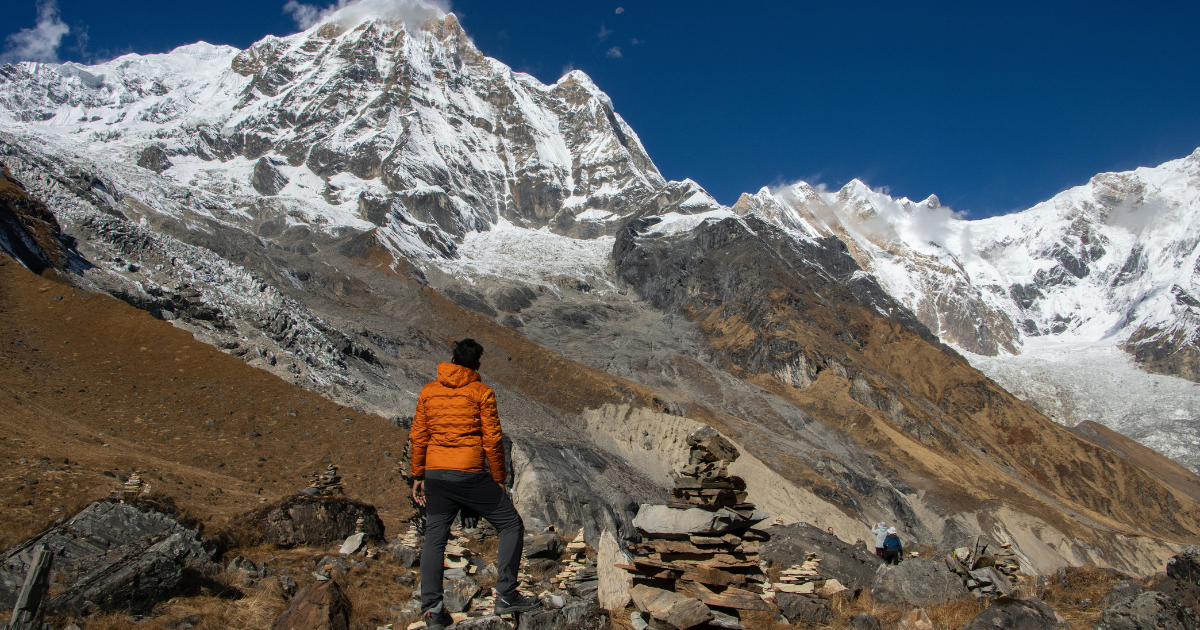The Treacherous Task of Recovering Frozen Remains
It’s typical for deceased mountaineers at high altitudes to remain where they’ve fallen, making their final resting place in the snow — transportation of mountain-climbing victims is treacherous for rescuers and complicated for the remains.
But sometimes recovery is possible, though it necessitates a complex and highly particular set of skills not easy to come by: those who would bring back the lost must make a climb which has already proven fatal, endangering their own safety in the process; they then complicate their task further attempting to move the corpse of an athletic adult after the already strenuous climb, through low-oxygen conditions. Freeing the remains from their frozen grave can be its own challenge; they must then be transported — rigid, fragile, and frozen, often heavier with accumulated ice, frequently mummified and prone to shattering – a task that requires a team of highly-qualified specialists, not all of whom may survive the attempt themselves.
Deep-freeze damage
Remains can be in various conditions, depending on how exposed the corpse has been; altitude and duration are significant factors. The higher the mountain and the greater the altitude, the more likely a corpse is to have been exposed to destructive natural forces and desiccated, perhaps mummified. First layers of protective clothing disintegrate in the sun and wind; next, the bodily tissues. Severely low temperatures, unfiltered ultraviolet radiation from the sun, and exposure to hurricane-level winds contribute, as do falling ice, rocks, and avalanches; in addition to causing secondary damage, such ntural processes can also easily displace remains, sometimes removing them from the mountain face entirely, pushed over cliffs or into crevasses.
Those buried by such processes may be better preserved intact compared to those who fell beside a trail, fully exposed, but may not be exposed for decades, if at all, and then by unpredictable weather-induced thaw.
Surprise recoveries
For example, in 2017, a couple who had disappeared together after heading off to milk their cows in a meadow was discovered at the edge of a glacier currently part of a ski resort in the Swiss Alps 75 years after they’d disappeared. They were remarkably preserved, having fallen deep into a crevasse, clothing still intact, revealed by snow and glacier melt. Their surviving daughter, aged 79, was finally able to provide long-awaited funeral service and emotional resolution.
In the case of William Stampfl, the American lost for 22 years in Peru with two other climbers who disappeared during an avalanche; one was found soon thereafter, the other is still missing. Stampfl was also ultimately exposed by melting, his remains mummified and otherwise well-preserved.
And famously, missing for decades, George Mallory and his climbing partner Sandy Irvine were at long last discovered not far apart on Everest. The duo had disappeared during their attempt in 1924, the first known attempt made on the mountain locals call Chomolungma: Goddess Mother of the World. Hillary was missing 74 years; Irvine, a full century, when their still partially-frozen remains were retrieved.
Finally, and perhaps more famous still, is the case of the mummified human “Ice Mummy” named “Ötzi”, estimated to have lived more than five thousand years ago, was discovered in thawing glacier in the Tyrolean Alps in 1991, his DNA perfectly intact.
Without the help of Mother Nature’s warming embrace, it’s likely none of these remains could have been recoverable.
Defrost
Once thawing begins, degradation of tissues typically proceeds speedily. When mummification has occurred, though, over many decades, leaching the body of fluids and nutrients, a sort of “deep-freeze standard” applies and takes its own route. (In such situations, relatively common when remains have been at altitude and unburied, processing is typically cremation.)
There are also those discovered whose identities are not, and sometimes cannot be, known; when not recently lost, identification becomes tricky indeed, depending on how exposed remains have been exposed due to thawing conditions and exposed scavengers.
Mountaineering is a gamble with inherent risks. Those accepting the challenge recognize that it may not be possible to come home. And while bringing long-lost remains back can provide closure to loved ones, even many decades later, there’s no guarantee of success.




